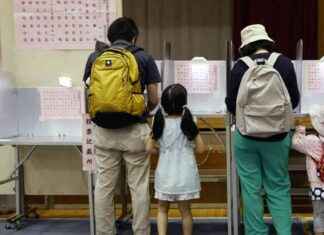In the Italian university sottofinanziata, the universities of the North – the historical ones, and of size large – close budgets excellent. That allow them to invest in faculty members (emeritus professors from abroad, for example), graduate courses, new buildings, classrooms wired. Are financial statements difficult to find in the good part of the faculty of Central Italy and of the South, compelled, consequently, to a greater dependence on the public sector and the expansionary policies more shy.
The signatures of the board of directors on the budget for 2020 to arrive close to Christmas, as the established practice. And say, for example, that the University of Padova , multistruttura that has 60 thousand students, with the three-year budget 2020-2022 has funded new scholarships for students for two million euro (19.5 million is the delivery total) and will invest 7.5 million in the infrastructures of excellence, mostly during the workshops. Half a million euros will be used to usher in smart classrooms and with 250 thousand euro estimated you will enable employees and precarious – teachers, researchers and doctoral students – the enrolment in the kindergarten for the children in the age. Forms of the european welfare state, here, that are a prelude to the birth of a nest, which is managed directly by the university.
it is Not that all is gold in Padua: the ordinary Fund, to the State, is stationary (over 300 million) from the three seasons, there are uncertainties for the confirmation of some european funding and other revenue from the sale of patents in the interior, but the programming – the university maintains personnel expenses to 69 percent, abundantly below the limit ministerial of the 80’s – and a tradition of high allow you to push, however, in the next departments, even in a time of thrift in the state. To bring “visiting professor” in the university, we always talk about Padua, in the budget there is one and a half million euro and 7.7 million will be used to enable cultural exchanges to the more motivated students.
Alma Mater back in to replace those who retire
The Board of directors of the University of Bologna , 85 thousand learners, has approved a budget for 2020, from 745 million euros and expected investments in the next three years equal to 244,3 million (eur 107.4 are own resources). There are five million extra on the Ffo of the state, that this season will be equal to € 384.9 million,+€. In Bologna, it should be mentioned, 55 percent of the students enrolled, it is part of the “no tax area”: a remarkable effort for the Alma Mater. The support funds to students (phd and specialist training medical) grow to 2.2 million euro. And with an increase of freshmen at 8.2 percent, in September 2020 will be activated thirteen new courses (magistrale degree), including “Advanced Spectroscopy in Chemistry in collaboration with four european academies, “Engineering of electric vehicles,” with the University of Modena-Reggio emilia and “sustainable Agriculture”. The rector Francesco Ubertini explains that, without a presence of reliable and generous of the State, “in the next two years will not be sustainable for the full recruitment on the part of the universities”, but confirms that the system Bologna enjoys good health: funding for research projects grow by 47 percent, and the university can afford to unlock the turnover of teachers: those who retire will be replaced.
the New laboratories for the study of the Earth
Milano-Bicocca has opened its academic Year with the new development plan of the campus, which includes the construction of a new six-storey building, the U10, and the renovation of an existing structure, U19. In the tower of the U10 will find a place in university accommodation for 104 beds, overlooking a green area. In the renovated U19 you will study the future of the Planet: from the former central hydrogen will be born the new laboratories dedicated to monitoring the geological environment of the Earth system and the expansion of activities in the field of production of electrical energy and renewable sources.
The strategic Plan for the next three years of the University of Bergamo , 24 thousand students, announces new areas and new classes, but against a +15 percent of the total members (foreigners are in the growth of 74,5 per cent), the rector Remo Morzenti Pellegrini and the academic Senate have chosen the way of the closed number – “sustainable and well-planned” – for all three-year degree courses of the Year 2020-2021, and the master of the next season. A further brake to the call to the study for the generation of social https://rep.repubblica.it/pwa/generale/2019/06/30/news/avanti_non_c_e_posto-230019418/).
Ca’ Foscari , finally. The university economic and linguistic Venice last December 18, has opened in the Aula magna of the Department of Management, the Strategy Innovation Hub. The structure-the incubator has the goal of creating and nurturing a community of entrepreneurs and managers who can engage and cultivate ideas strategic innovation by listening to the academic world. The technologies of the hub have been entrusted to Sharp: Ca’ Foscari university of venice nourishes the ambition to indicate to the Country, within the current fourth industrial revolution, “a radical repositioning the competitiveness of its productive system”.
“The Republic will fight always in defense of the freedom of information, to its readers and to all those who have at heart the principles of democracy and civil coexistence”
Carlo Verdelli SUBSCRIBERS TO REPUBLIC © Reproduction reserved Today For now, Trump wins the bet with the ayatollahs of Tehran and the dream of the new Persia, Because between Iran and the Usa, the conflict is not finished Trump, the war declared via Twitter, and the issue of social media with the politicians “In the bunker under the missiles.” The night of the italians in Erbil
the Republic






